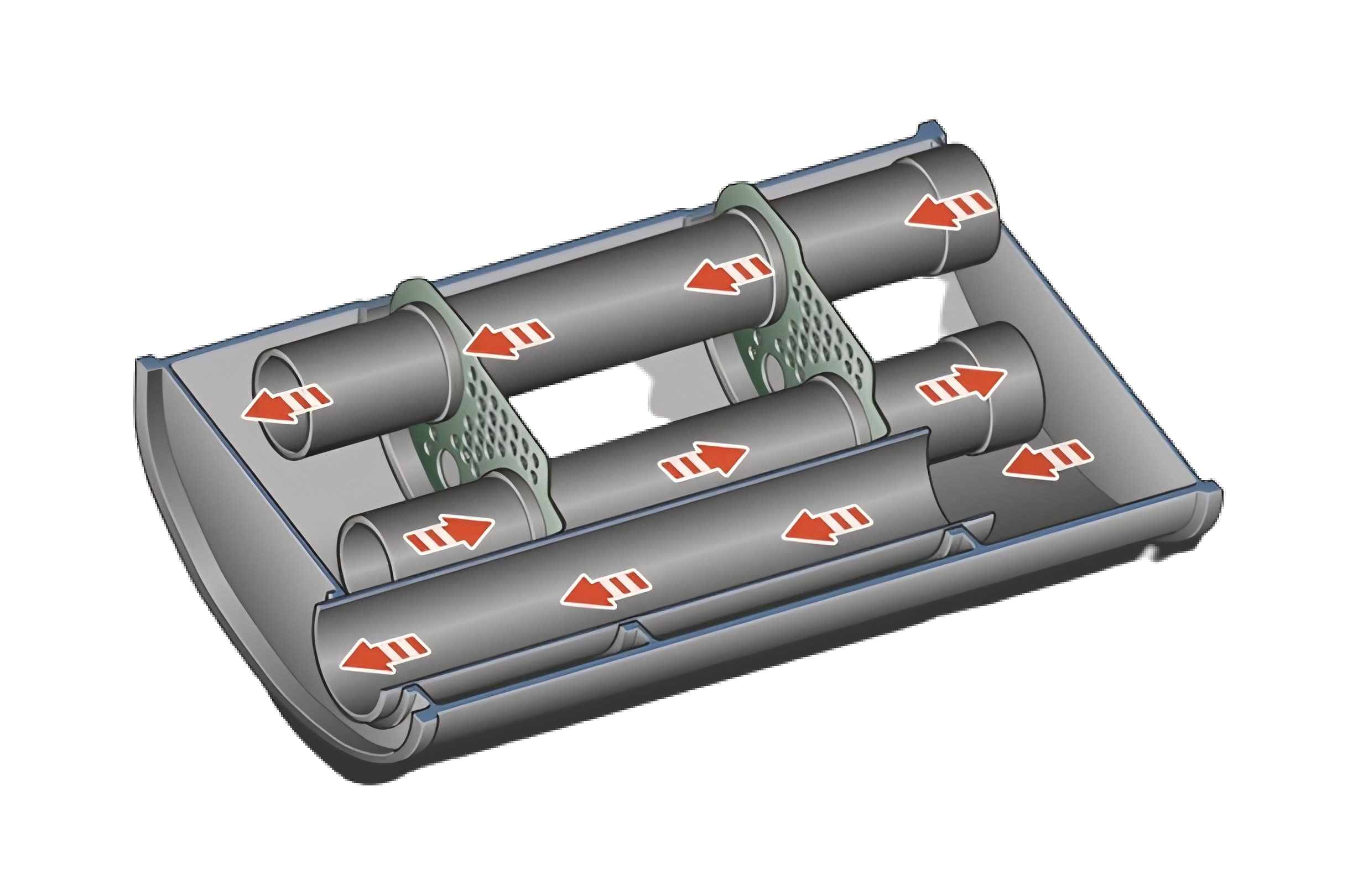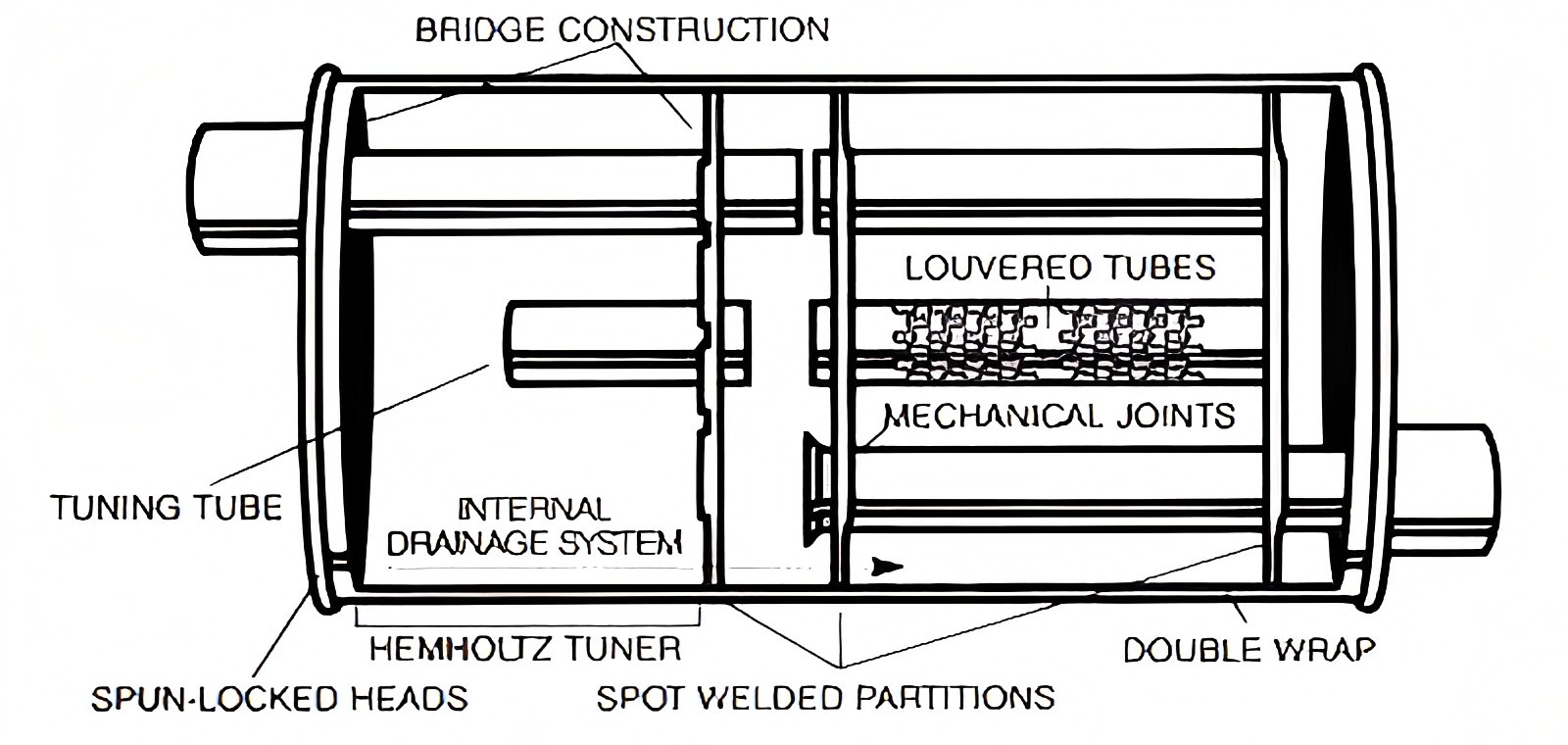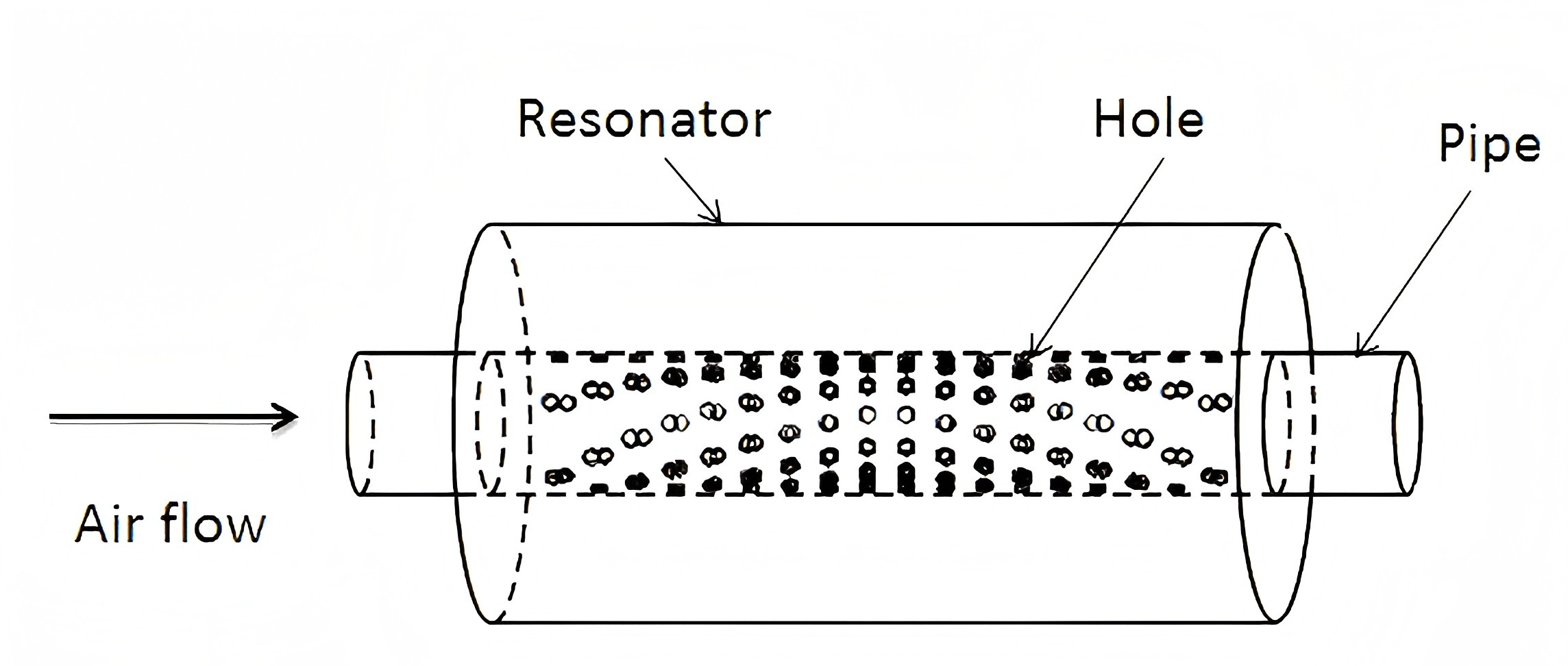Wanneer je gas geeft, is dat gegrom – of zachte gebrom – niet alleen afkomstig van de motor. Het is het interne ontwerp van de uitlaatdemper dat het uitlaatgeluid vormgeeft tot iets agressiefs, verfijnds of fluisterstils. Begrijpen hoe uitlaatdempers werken, helpt je de combinatie van akoestiek, luchtstroom en techniek achter elk uitlaatsysteem te waarderen.

Een verbrandingsmotor produceert geen constante stroom uitlaatgassen, maar stoot pulsen gas onder hoge druk uit telkens wanneer een cilinder ontsteekt. Deze pulsen creëren geluidsgolven die zich door de motor voortplanten. uitlaatsysteem.
De taak van een uitlaatdemper is om de geluidsgolven te beheersen, door ze te annuleren, te absorberen of om te leiden, zonder de prestaties van de motor te beïnvloeden.
Er zijn drie belangrijke manieren waarop een uitlaat het geluid manipuleert:
Reflectie (interferentie): Het laten stuiteren van geluidsgolven in kamers, zodat ze elkaar opheffen.
Absorptie: Het gebruik van materialen zoals glasvezel of staalwol om hoogfrequent geluid te absorberen.
Resonantie-afstemming: het ontwerpen van kamers die zich richten op specifieke frequenties om deze te versterken of te onderdrukken.
Type demper | Interne structuur | Geluidsprofiel | Typisch gebruik |
Rechtdoor (Glasspack) | Er loopt een geperforeerde buis dwars doorheen, omwikkeld met geluiddempend materiaal. | Luid, diep en vrij vloeiend; agressieve sportwagentoon. | Prestatie- en aftermarketuitlaten. |
Gekamerde demper | Meerdere kamers reflecteren geluidsgolven om bepaalde frequenties te neutraliseren. | Keeltoon, gespierd en matig volume. | Muscle cars, prestatie sedans. |
Turbo (S-Flow) demper | Uitlaatgassen stromen door S-vormige kanalen en geperforeerde buizen. | Soepel, stil en gebalanceerd geluid. | OEM- en comfortgerichte voertuigen. |
Resonator (Helmholtz-kamer) | Een afgestemde holte neutraliseert specifieke geluidsfrequenties. | Nauwkeurige toonvorming: vermindert drone of versterkt bepaalde noten. | Hoogwaardige en op maat gemaakte prestatiesystemen. |
Klepdemper (actief) | Ingebouwde kleppen regelen de luchtstroom (stille/rechttoe-rechtaan-modus). | Schakelbaar: stil in de comfortmodus, luid en rauw in de sportmodus. | Sportwagens, luxe prestatiemodellen. |
Verschillende ontwerpparameters bepalen het geluid van een uitlaat:
Grootte en dichtheid van de perforaties: Hoe meer/grotere gaten, hoe meer frequenties ze absorberen, waardoor een vloeiendere toon ontstaat.
Kamervolume: Grotere kamers verminderen de lage frequentie-dreun, kleinere kamers beperken de hoge tonen.
Akoestische materiaaldichtheid: Dichtere materialen absorberen meer hoge tonen, lossere materialen behouden de bastonen.
Lengte en vorm van de buis: Langere of meer gedraaide paden maken de uitlaatgassen stiller, maar kunnen de doorstroming beperken.
Klepstand: Open kleppen = rauw en krachtig; gesloten kleppen = verfijnd en stil.

Ferrari & Lamborghini: Combineer Helmholtz-kamers met actieve kleppen voor een zacht stationair toerental en een schreeuwend geluid bij hoge toerentallen.
BMW M & AMG-modellen: Gebruik rechte uitlaatdempers met elektronisch geregelde kleppen voor een evenwichtige, sportieve toon.
Dagelijkse sedans (Toyota, Honda): zijn uitgerust met meerkamer- of S-flow-dempers voor een stille, comfortabele werking.
Aftermarketmerken (Borla, HKS, Flowmaster): bieden afgestemde straight-through of chambered ontwerpen voor liefhebbers die op zoek zijn naar een kenmerkend geluidsprofiel.

Hoewel een open, rechte uitlaat de doorstroming en het vermogen maximaliseert, kan dit het dagelijks rijden ondraaglijk luidruchtig maken. Aan de andere kant houden te restrictieve ontwerpen de boel stil, maar beroven ze de motor van prestaties.
Moderne systemen zorgen voor een evenwicht: uitlaten met kleppen en resonatorafstemming zorgen op verzoek voor zowel comfort als spanning.
Een uitlaatdemper is niet alleen een geluidsdemper, het is een muziekinstrument voor uw motor.
Van het subtiele gespin van een luxe sedan tot het felle geblaf van een raceauto, de interne structuur van een uitlaatdemper bepaalt het karakter van elk uitlaatgeluid. Dus de volgende keer dat u een kenmerkend gerommel hoort, bedenk dan: dat geluid is ontworpen, niet zomaar geproduceerd.